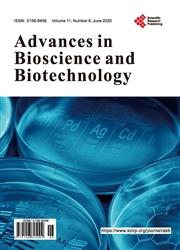Bioconversion of Fish Hatchery Waste as Feed in the Production of Live Feed
引用次数: 3
Abstract
Purple Non-Sulfur Bacteria (PNSB), also known as phototrophic bacteria are widely distributed in both freshwater and marine environment and capable to grow in wide range of substrates. In this study, Bacterium Rhodobacter sphaeroides strain UMS2, a freshwater isolate was used in this study in utilization of fish hatchery waste. This study was conducted to determine the nutritional values of bioprocess product that was grown in fish hatchery waste. Finally, the waste bio-converted product was used as feed supplement to monitor the growth performance of live feed Tubifex spp. Inoculum of Rhodobacter sphaeroides strain UMS2 was developed in 112 synthetic media and 48-h culture of 30% (v/v) inoculum was used in fish hatchery waste during the bioprocess. The nutritional values of bio-converted product, except total ash (%), were not significantly improved with 30% (v/v) inoculum of Rhodobacter sphaeroides, strain UMS2. Feeding trial in bloodworm (Tubifex spp.) with bioconversion product conducted for 15 days to monitor growth (w/v) of live feed. Initial growth 1.42 ± 0.001 g/L of Tubifex spp. was stocked in 15 × 75 × 15 cm plastic tray connected with recirculated system. Tubifex spp. was observed to be comparatively higher (1.55 ± 0.12 g/L) while fed in the product that contained bacterium than the growth (1.44 ± 0.15 g/L) of Tubifex spp. fed in the bioconversion product of without bacterium. The inoculums size (30%) of bacterium not enough to support the growth of Rhodobacter sphaeroides, strain UMS2 in the bioconversion process to improve the nutritional values. However, while used as feed supplement it improved the growth performance of the Tubifex spp. So, bacterium Rhodobacter sphaeroides, strain UMS2 has potentiality to be used as feed supplement in the production of live feed.鱼类孵化场废弃物作为饲料在活饲料生产中的生物转化
紫色非硫细菌(PNSB),也称为光养细菌,广泛分布于淡水和海洋环境中,能够在各种基质中生长。本研究使用淡水分离物球形红细菌UMS2菌株对鱼类孵化场废弃物进行利用。本研究旨在确定在鱼类孵化场废弃物中生长的生物加工产品的营养价值。最后,将废弃的生物转化产物用作饲料补充剂,以监测活饲料Tubifex spp.在112种合成培养基中开发了球形红杆菌UMS2菌株的接种物,并在生物过程中在鱼类孵化场废物中使用30%(v/v)接种物的48小时培养物。接种30%(v/v)球形红杆菌UMS2菌株,除总灰分(%)外,生物转化产物的营养价值没有显著提高。用生物转化产品对血虫(Tubifex spp.)进行为期15天的饲养试验,以监测活饲料的生长(w/v)。Tubifex spp.的初始生长为1.42±0.001 g/L。储存在与再循环系统连接的15×75×15cm塑料托盘中。观察到,在含有细菌的产品中饲养的Tubifex spp.的生长量(1.44±0.15 g/L)相对较高(1.55±0.12 g/L),而在没有细菌的生物转化产品中饲养。细菌的接种量(30%)不足以支持球形红细菌的生长,菌株UMS2在生物转化过程中提高了营养价值。然而,在用作饲料补充剂的同时,它提高了Tubifex spp.的生长性能。因此,球形红细菌UMS2菌株有潜力用作活饲料生产中的饲料补充剂。
本文章由计算机程序翻译,如有差异,请以英文原文为准。
求助全文
约1分钟内获得全文
求助全文

 求助内容:
求助内容: 应助结果提醒方式:
应助结果提醒方式:


